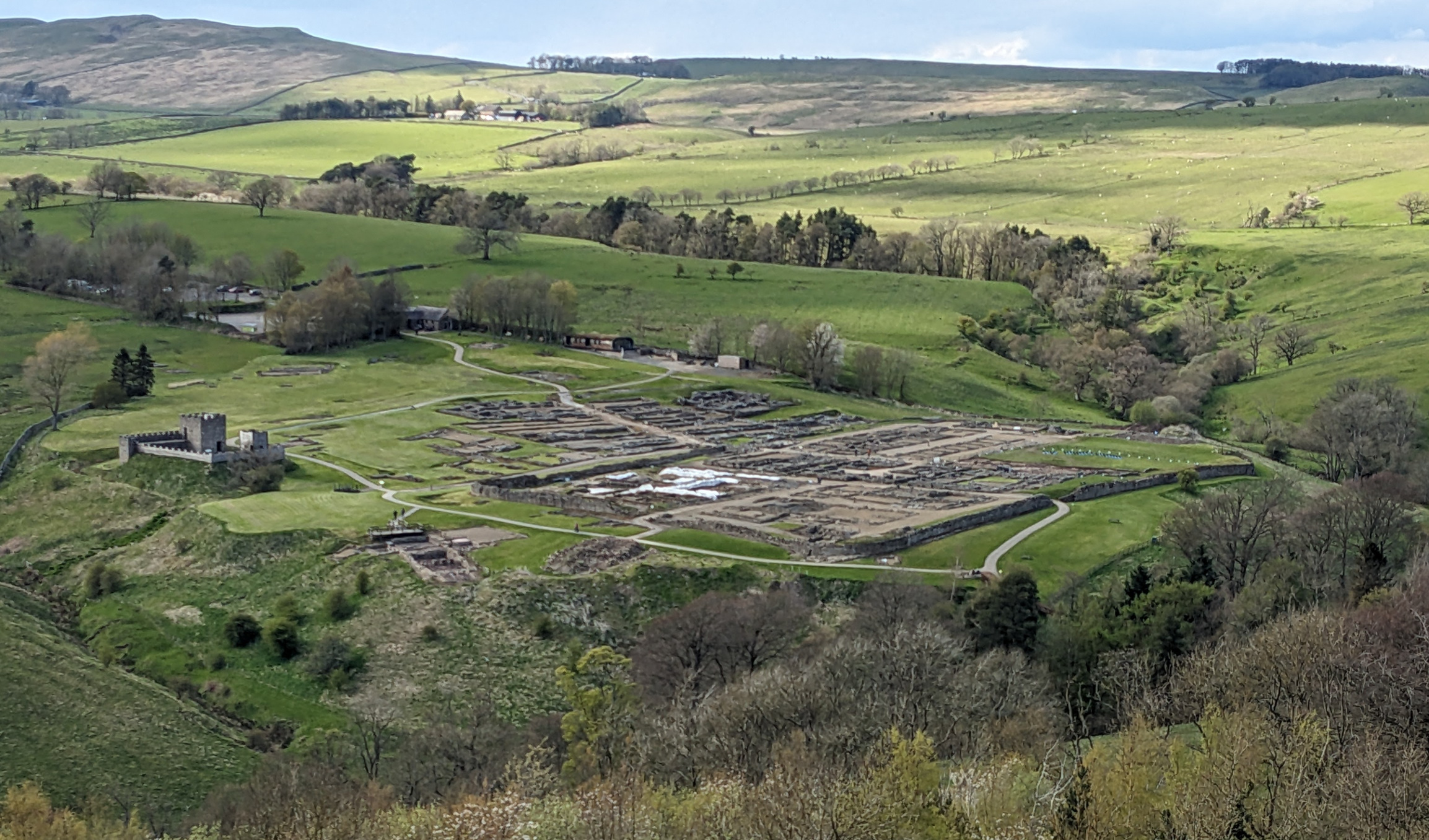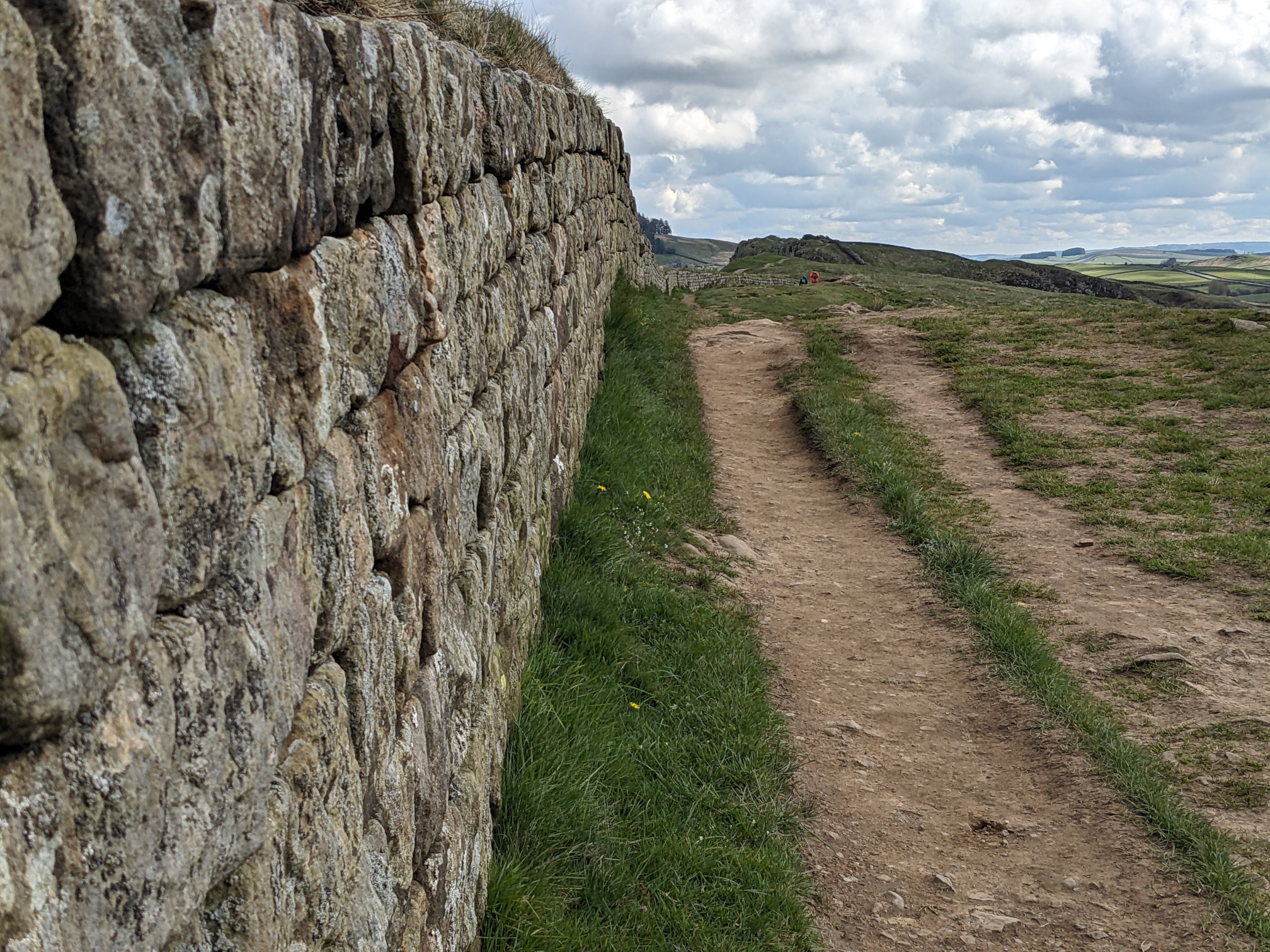Vindolanda Day 6: Hadrian's Wall
Posted on April 27, 2024 • 6 minutes • 1269 words
Table of contents
 This is part of a series
where I document my time volunteering at an archaeological dig in North England in April 2024.
Have a look at some of the other posts to see some of the cool things I got up to.
This is part of a series
where I document my time volunteering at an archaeological dig in North England in April 2024.
Have a look at some of the other posts to see some of the cool things I got up to.
On the weekend during the archaeological dig at Vindolanda, I took a day to go walk a short section of the Wall. In all I did about six hours of walking in a large round trip starting and ending at Vindolanda and seeing some beautiful sections of Hadrian’s Wall, Sycamore Gap and Housesteads Fort.
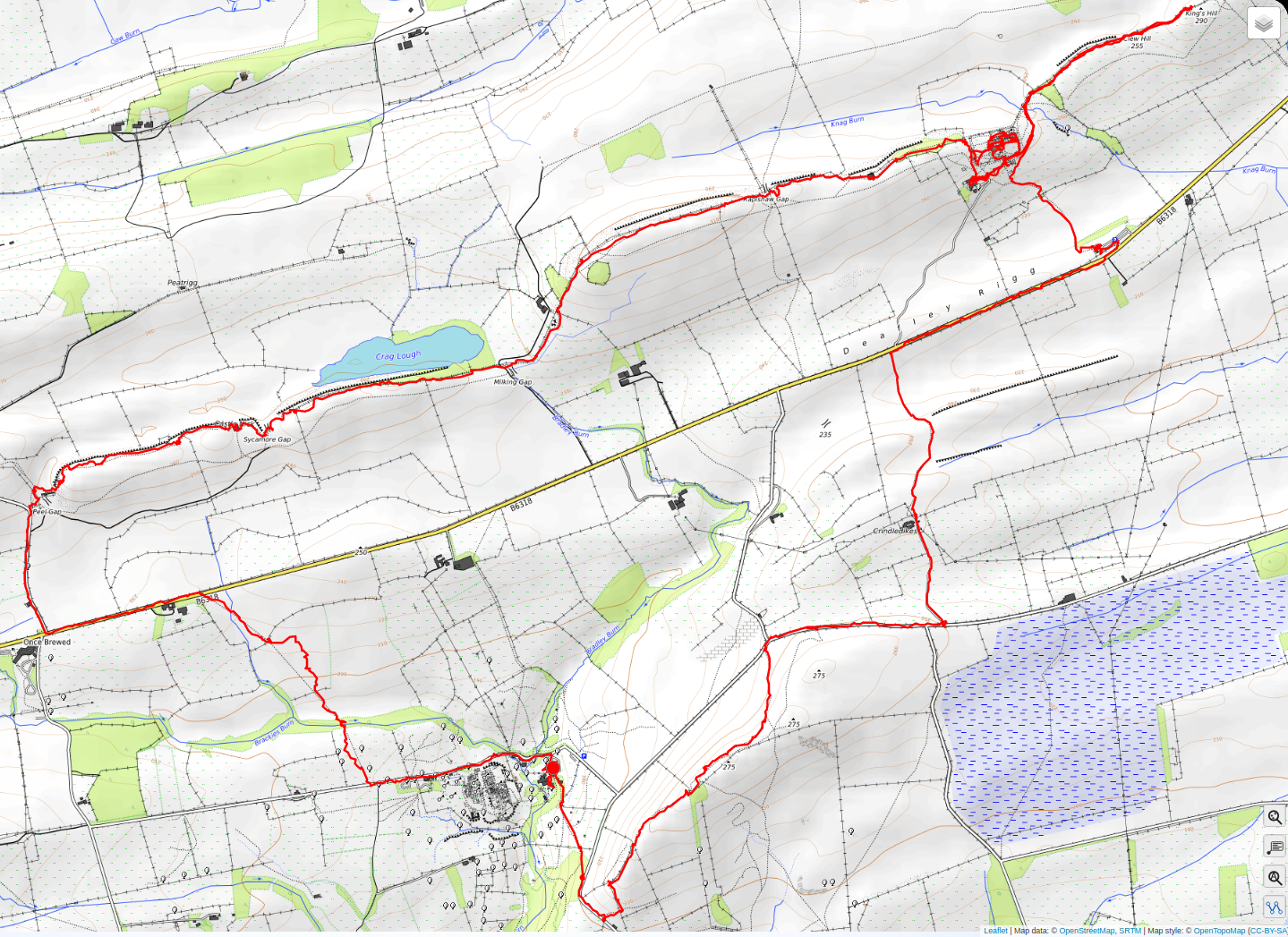
Hadrian’s Wall
The first part of the day’s plan was to actually get to Hadrian’s Wall. Vindolanda is not on Hadrian’s wall, but is rather some distance South of it. In fact Vindolanda (or one of the forts, at least) predates the wall by about forty years and so wasn’t quite in the right position for it. The walk from the fort to the wall, including some embarrassingly large detours to avoid sheep that you can see on the map above, took about 50 minutes for me.
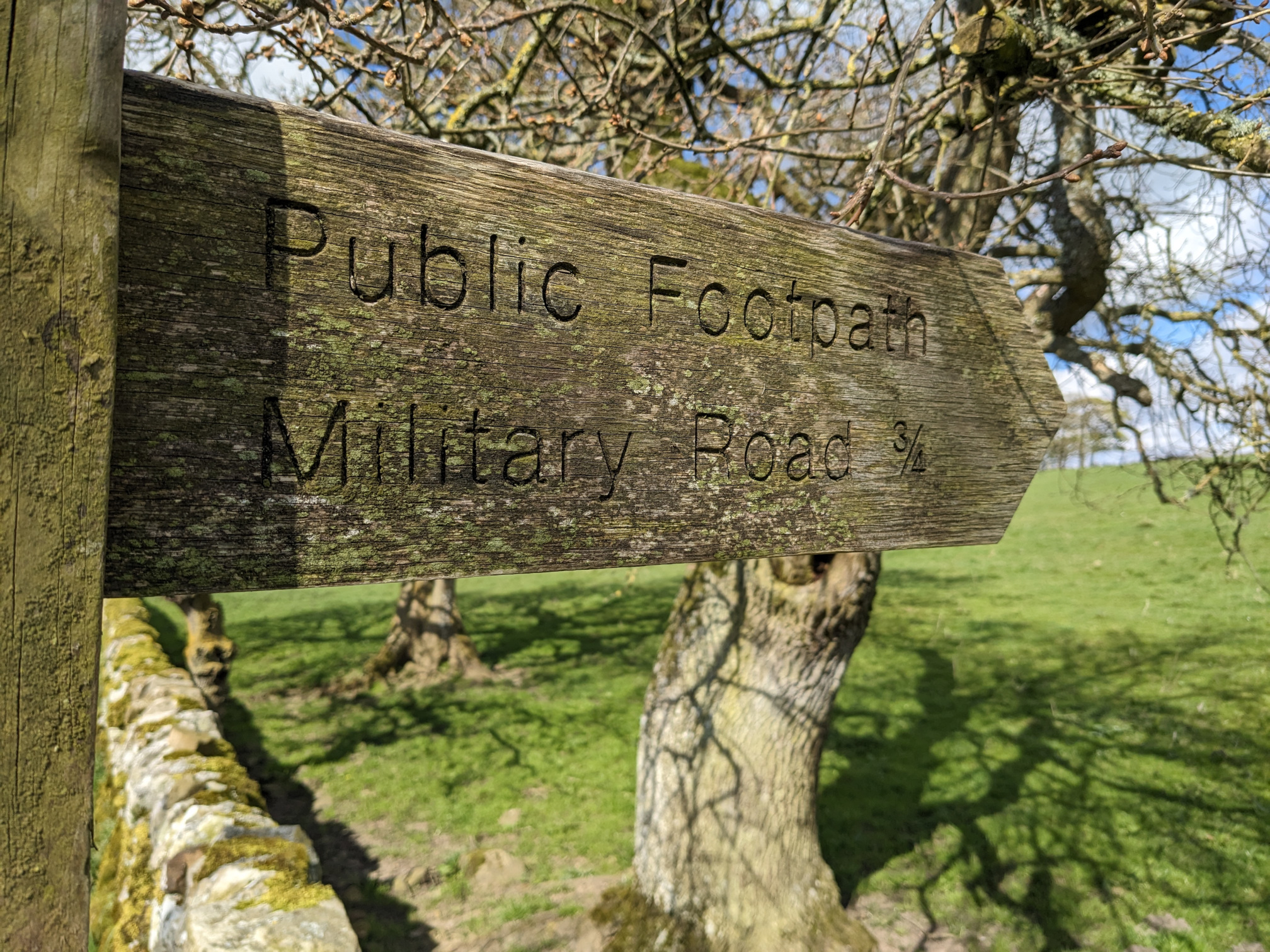 It’s just been lambing season, and all the flocks have lots of cute little lambs running around. This does mean I was extra careful to avoid upsetting any mama sheep by getting between them and their lambs. As it happens I was almost charged by cows on my way back. They’d started to accelerate towards me but I kept walking straight on, keeping a line of trees between us in case I needed to baffle them, and eventually they stopped about 20 meters away. Always be careful of the livestock when wandering through fields!
It’s just been lambing season, and all the flocks have lots of cute little lambs running around. This does mean I was extra careful to avoid upsetting any mama sheep by getting between them and their lambs. As it happens I was almost charged by cows on my way back. They’d started to accelerate towards me but I kept walking straight on, keeping a line of trees between us in case I needed to baffle them, and eventually they stopped about 20 meters away. Always be careful of the livestock when wandering through fields!
I got to the wall at Peel Gap and headed East. The wall rambles up and down a series of hills as it goes so you can tire quite quickly. However, the dramatic landscape, both North and South more than makes up for it
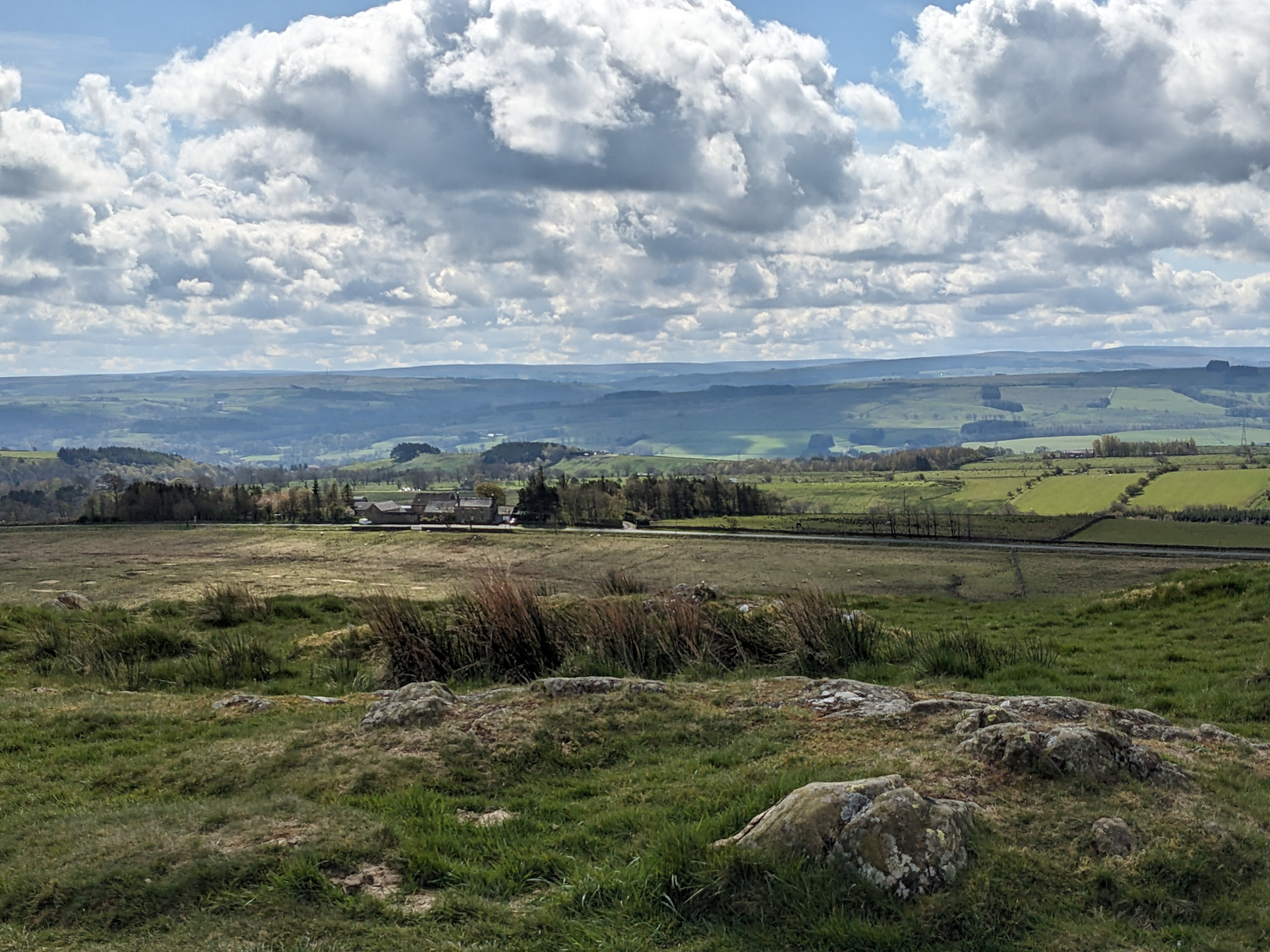 The Wall is punctuated by Milecastles
which, as the name suggests, are small fortlets every Roman mile along the Wall. They often served as portals through the wall, as shown in this photo, taken from within a Milecastle just before Housesteads fort:
The Wall is punctuated by Milecastles
which, as the name suggests, are small fortlets every Roman mile along the Wall. They often served as portals through the wall, as shown in this photo, taken from within a Milecastle just before Housesteads fort:
 As you go over each hill and into each gap, you get an excellent view of the Milecastles coming down. Here is the layout of castle 39 (“Castle Nick”). You can still see the two gates and the rows of buildings on either side of the street.
As you go over each hill and into each gap, you get an excellent view of the Milecastles coming down. Here is the layout of castle 39 (“Castle Nick”). You can still see the two gates and the rows of buildings on either side of the street.
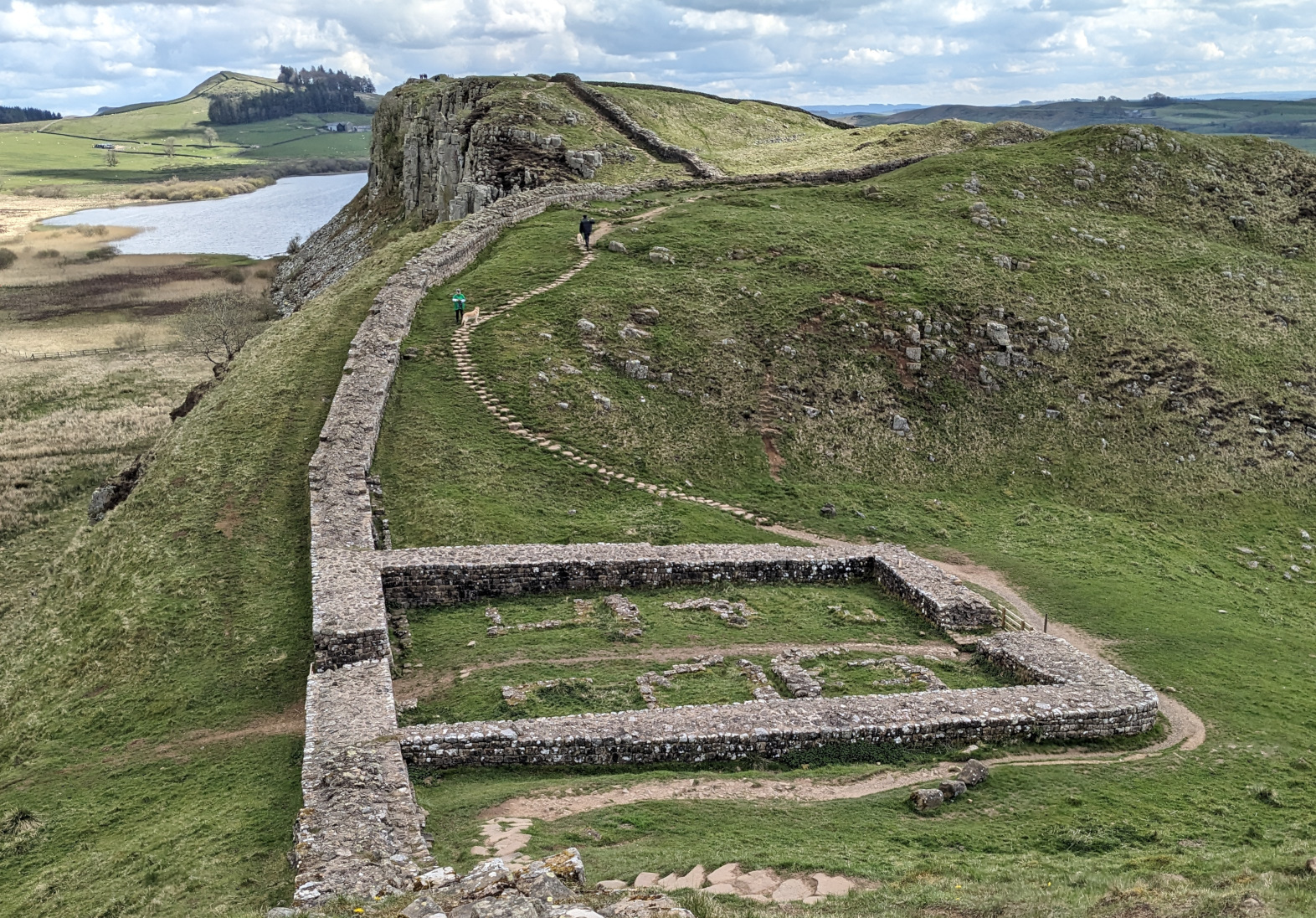
After walking to Housesteads and visiting the fort (see below), I walked a little further before heading for home. Here is a view along the wall looking back towards Housesteads - just visible before the trees. It shows nicely how the wall used natural cliff faces to supplement its impassibility.
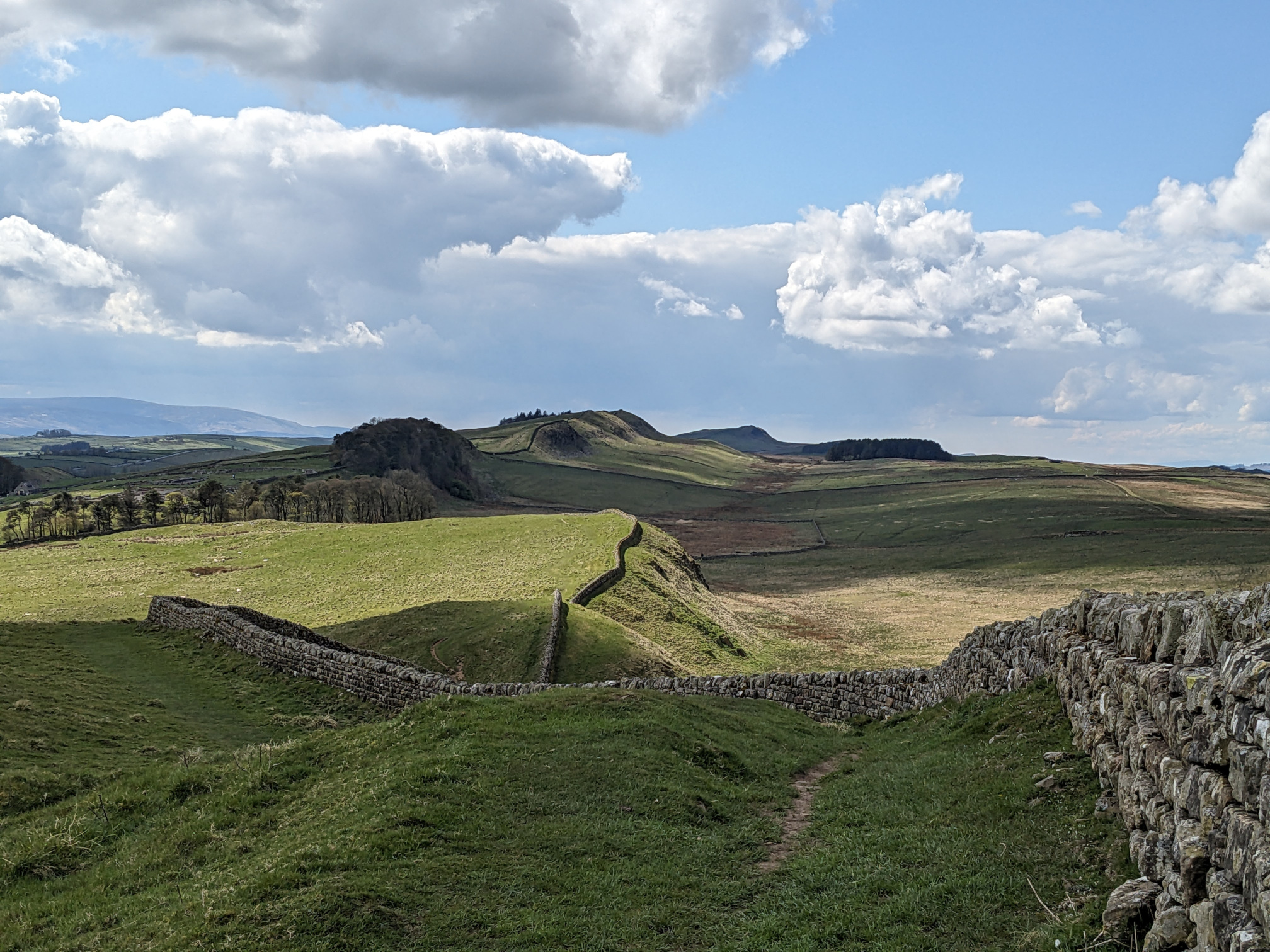
Housesteads Fort
Housesteads , or Vercovicium to give it the historical name, is another auxiliary fort quite close to Vindolanda. Its North wall forms part of Hadrian’s wall and it commands some quite striking views. It appears to be jointly run by English Heritage and the National Trust which may explain some of what follows.
The fort itself is massive and impressive. It abuts the wall and has some incredible stonework around its exterior, with a complete, high wall that still functions to keep casual walkers out! The external walls and gates are very easy to imagine at full height if you squint just a little. The site features fantastic dual granaries (horrea) on the main road of the fort or via principalis.
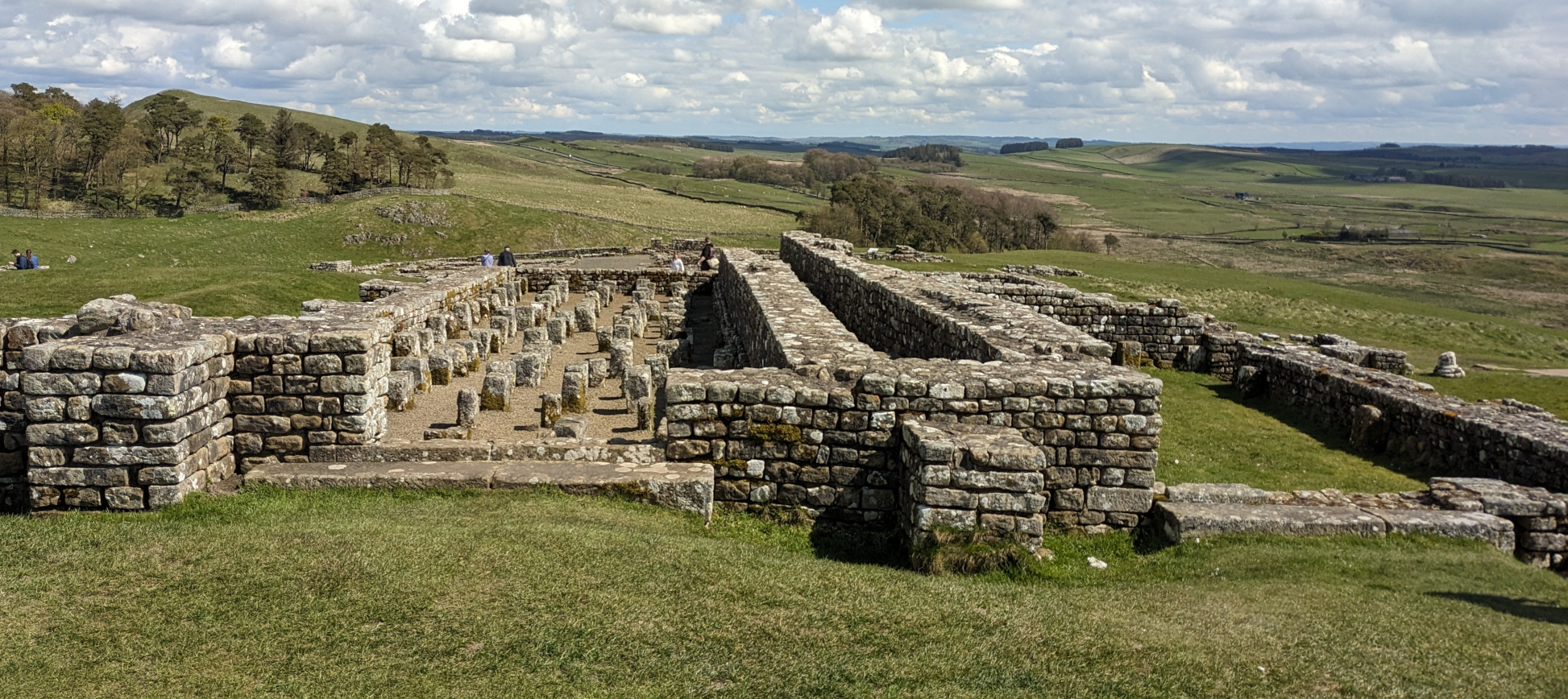
The communal latrines deserve their fame and are quite something to behold. With the channels and pipes set up, you can almost make out exactly how the 800 strong contingent would have dealt with their sewerage. It feels shockingly modern.
The fort also has a hospital behind the headquarters building with a fascinatingly complete floor plan.

However, overall I was left feeling disappointed. I remember visiting the site in 2004 with my family and being blown away with all the Roman ruins, but a couple of things have happened since then.
Firstly, it appears as if the site has not seen any upkeep since then. The vast majority is covered by unkempt grass and all the signage (of which there is actually not a lot) is faded and difficult to read. There is no “order” to the site, or natural way to explore it and you are left to your own devices to try work out where the interesting bits are. For example, some of the information boards are only visible if you purposefully go to each corner of the fort like some kind of poorly constructed search quest in a video game. You are also not provided with a map of the site or any other information upon getting your ticket which I found disappointing. The museum is small: I “did” it in about 5 minutes and there is no cafe at the site (though there is one at the car park).
However, what I think is the biggest shame is how little it is excavated. There are huge sections of the fort that are still untouched, and those that have been “done” could be done better in my (uneducated opinion). For example, the principia of a fort is its headquarters, strong room and Emperor-cult shrine all rolled into one. Its an impressive building where the legion (or cohort) would have kept its standards and chests of coins. It typically had a courtyard that lead into a second area with permanent guards protecting the shrine and strongroom.
In Housesteads this building is mostly grown over and certainly not explained to its fullest. Most bizarrely, in the courtyard a most beautifully carved section of flagstone peeked out from under the grassy floor. I almost instinctively reached for my trowl to clear off the remainder of the stone. If there are more stones like that just under the ground it is a crying shame that we can’t see the principia in its full glory.
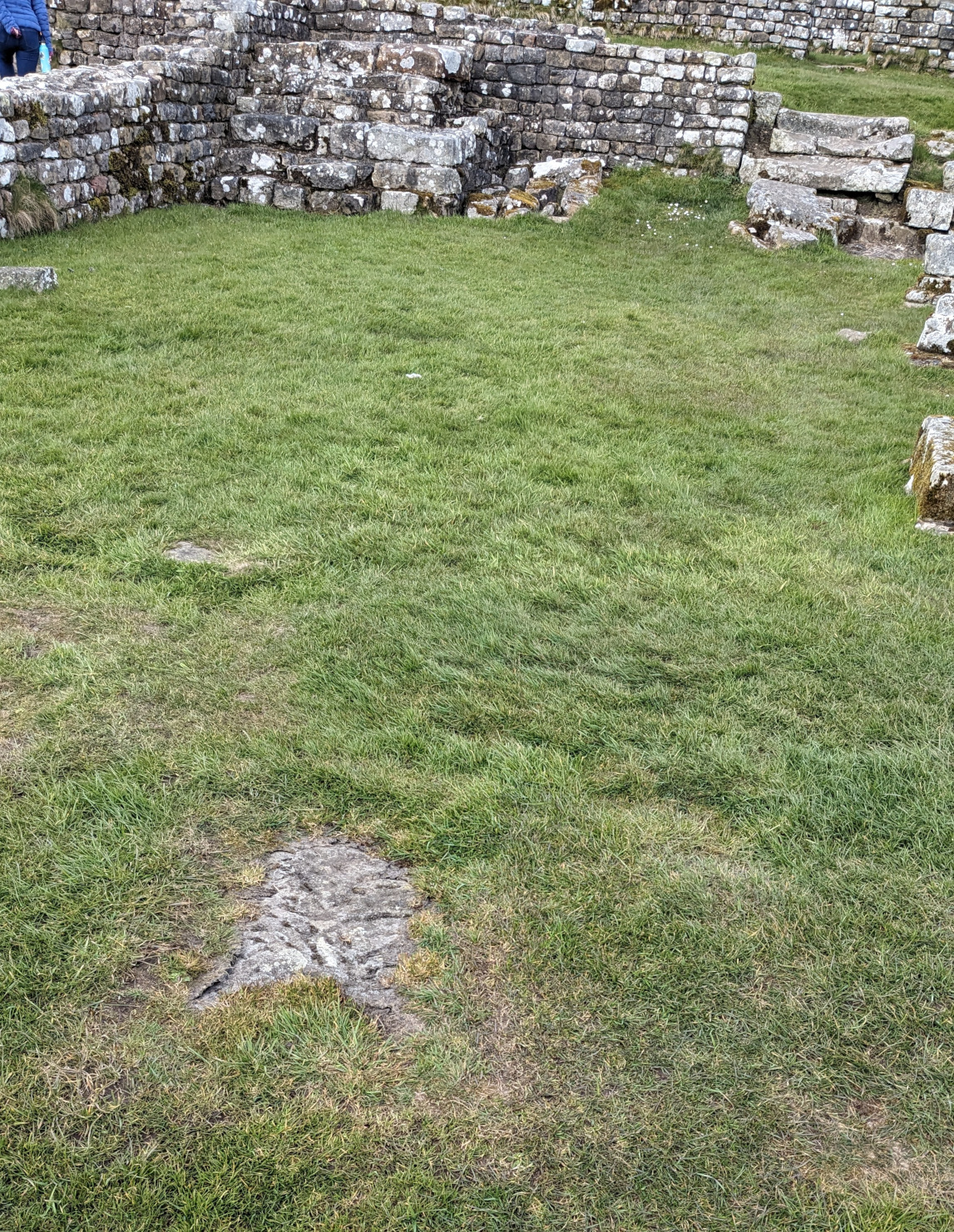
Excavation is a massive and slow process. It costs money, time and a lot of labour. I can understand why so little of the fort is excavated and can guess that this is not made easier by the fact that it is shared between two rival preservation societies.
However, looking back at photos of Vindolanda from 2004, its incredible to see the difference that has been made there. Continuous work has uncovered great swathes of the fort and kept the archaeology alive. It is a shame Housesteads doesn’t feel the same way
 If you are pressed for time and can only pick one, I’d suggest you visit Vindolanda over Housesteads. They are quite close by car and although Housesteads is more “Hadrian’s Wall”-ish, it feels much more like a ruin than Vindolanda which feels like a Roman settlement.
If you are pressed for time and can only pick one, I’d suggest you visit Vindolanda over Housesteads. They are quite close by car and although Housesteads is more “Hadrian’s Wall”-ish, it feels much more like a ruin than Vindolanda which feels like a Roman settlement.
Vindolanda overlook
On the way back to Vindolanda, I attempted to go visit the quarry in the hills above the fort. This is where the Romans mined the stone to construct their buildings. However, the last gate I had to go through had seized up: rusted or been jammed I wasn’t sure, and after a few minutes of trying to get it open, I decided to move on and just head home.
Part of the reason I was happy to give up was that I’d already found a fantastic spot to photograph Vindolanda (next time I’m bringing a proper camera and not just a phone). Again you can see the final quarter of the fort to be excavated (right hand side) and if you zoom in far enough, even our blue wheelbarrows and brown trench!
